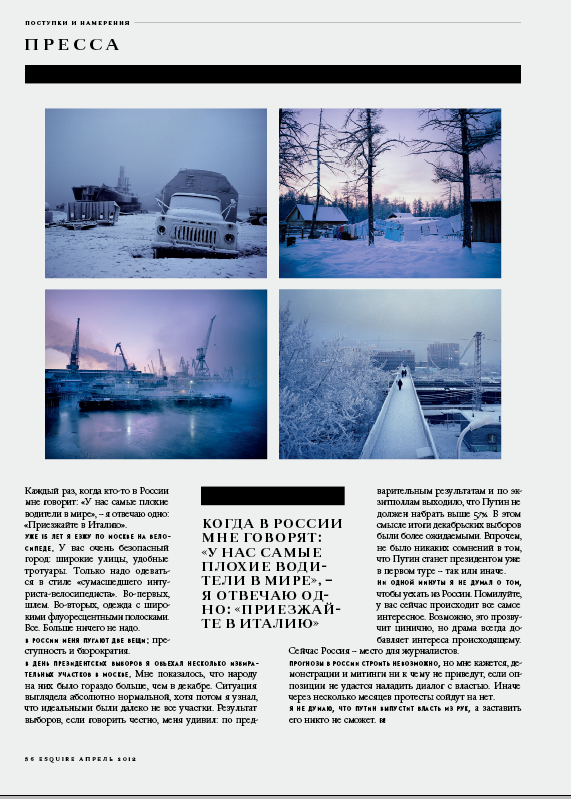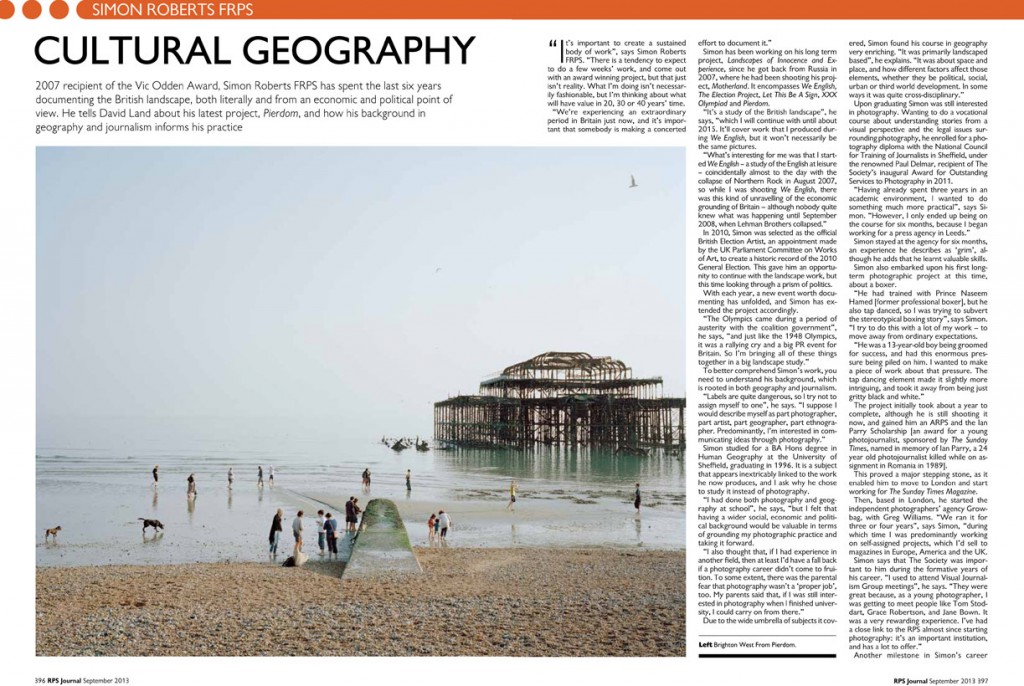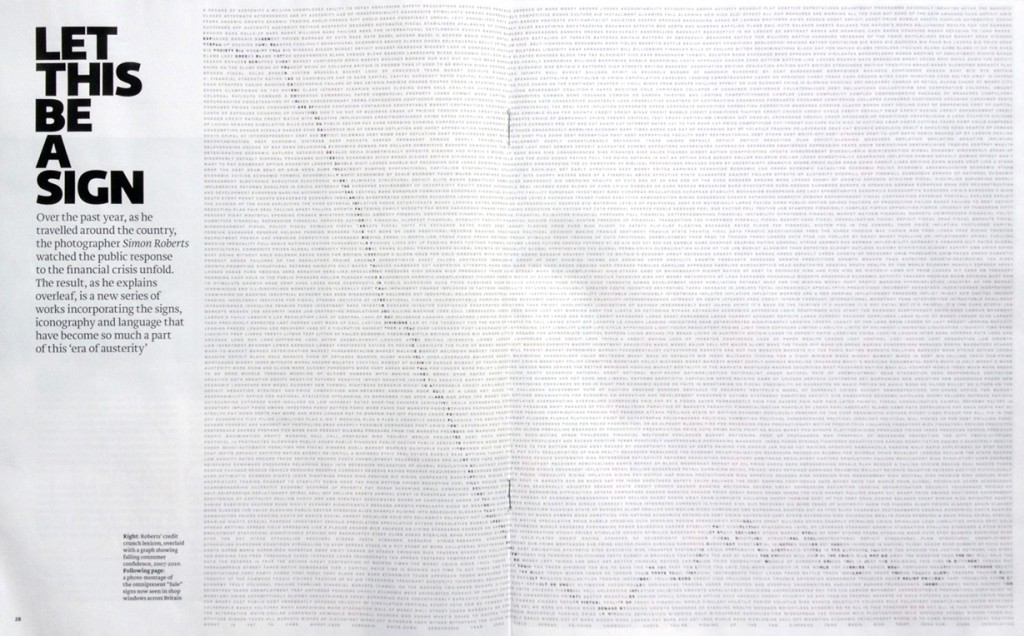At this year’s Royal Photographic Society Annual Awards held in London on 17th September I was made an Honorary Fellow of the Society, along with the photographers Giles Duley, Tim Flach, Peter Fraser and Jane Hilton.
You can find out more about the 2013 awards here.
About the RPS Awards-
The Society’s Annual Awards are offered to individuals who have made significant contributions to the art and science of photography. The Society has adopted a wide definition of photography which refers to the art and science of the recording of light or other radiation on any medium on which an image is produced or from which any image may by any means be produced. Award nominations are considered by a committee headed by the immediate Past President – for the 2013 Awards this will be Rosemary Wilman HonFRPS – and recommendations are put to The Society’s Council for confirmation.
The Society has made Awards to photographers and those in photography since 1878 when its Progress medal was first awarded. There are now fifteen categories (see list left each of which includes an historical record of winners). In addition The Society also awards Honorary Fellowships of The Society – an honour it first bestowed in 1895. Recent Award winners have included photographers Terry O’Neill, Albert Watson, Annie Leibovitz and Martin Parr, and individuals Philippe Garner, Sir David Attenborough and Tim Berners-Lee, alongside scientists and museum and gallery curators.
This month the RPS Journal features an interview about my practice, which you can read here.
【 prism 】【 07 】magazine has published featuring photographers: David Favrod (Gaijin), Julie Pochron (Umami), Jeff Rich (Watershed), Bart and Silvia Pogoda (As if there was No Tomorrow), Yuta Nakajima (Before You Forget), Laura Makabresku (Moon is for Adults Only), Simon Roberts (We English), Zhe Chen (Bees), Lisa Kereszi (The Party’s Over) and AM Projects part 1 featuring: Gert Jochems, Tiane Doan Na Champassak and Daisuke Yokota.
My second dispatch from the London Olympics published in today”s Financial Times Weekend Magazine and online here.
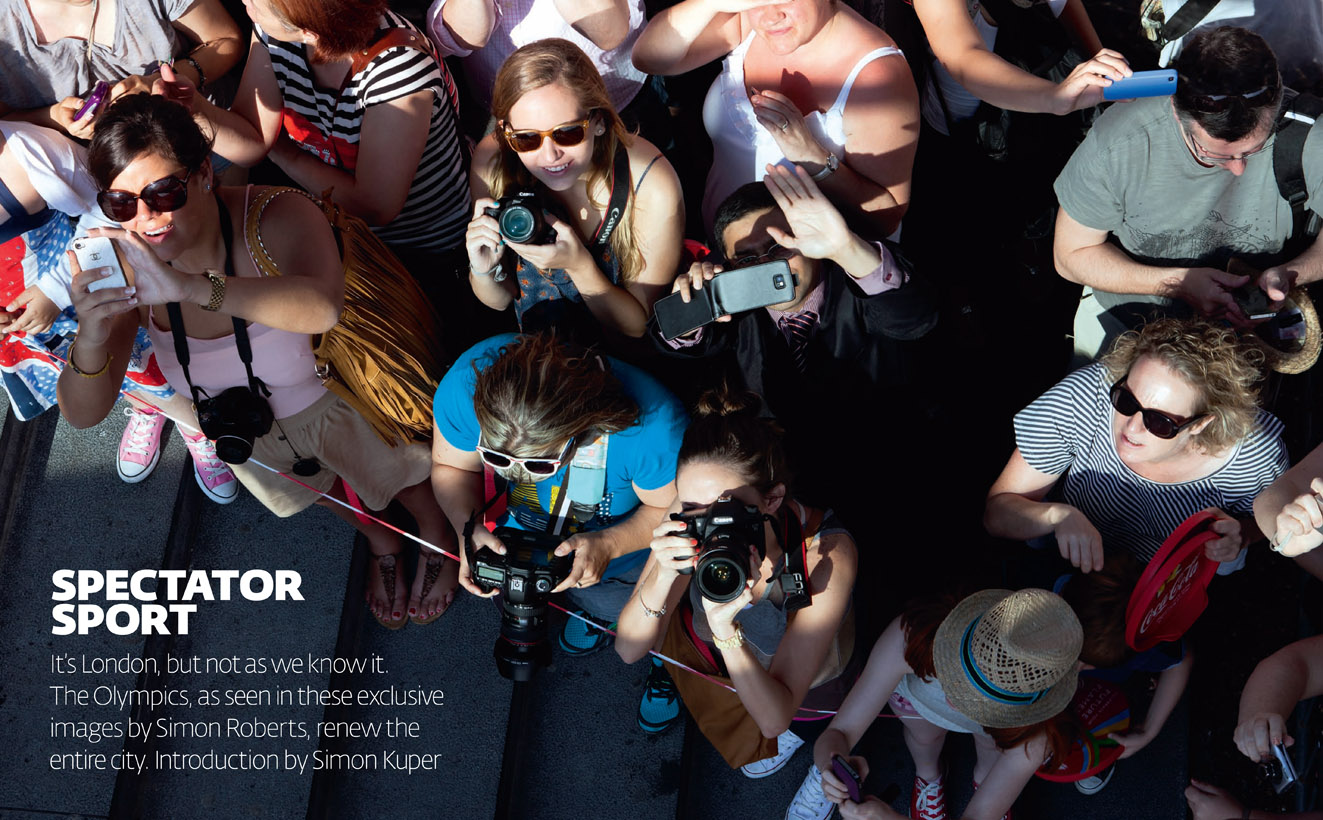
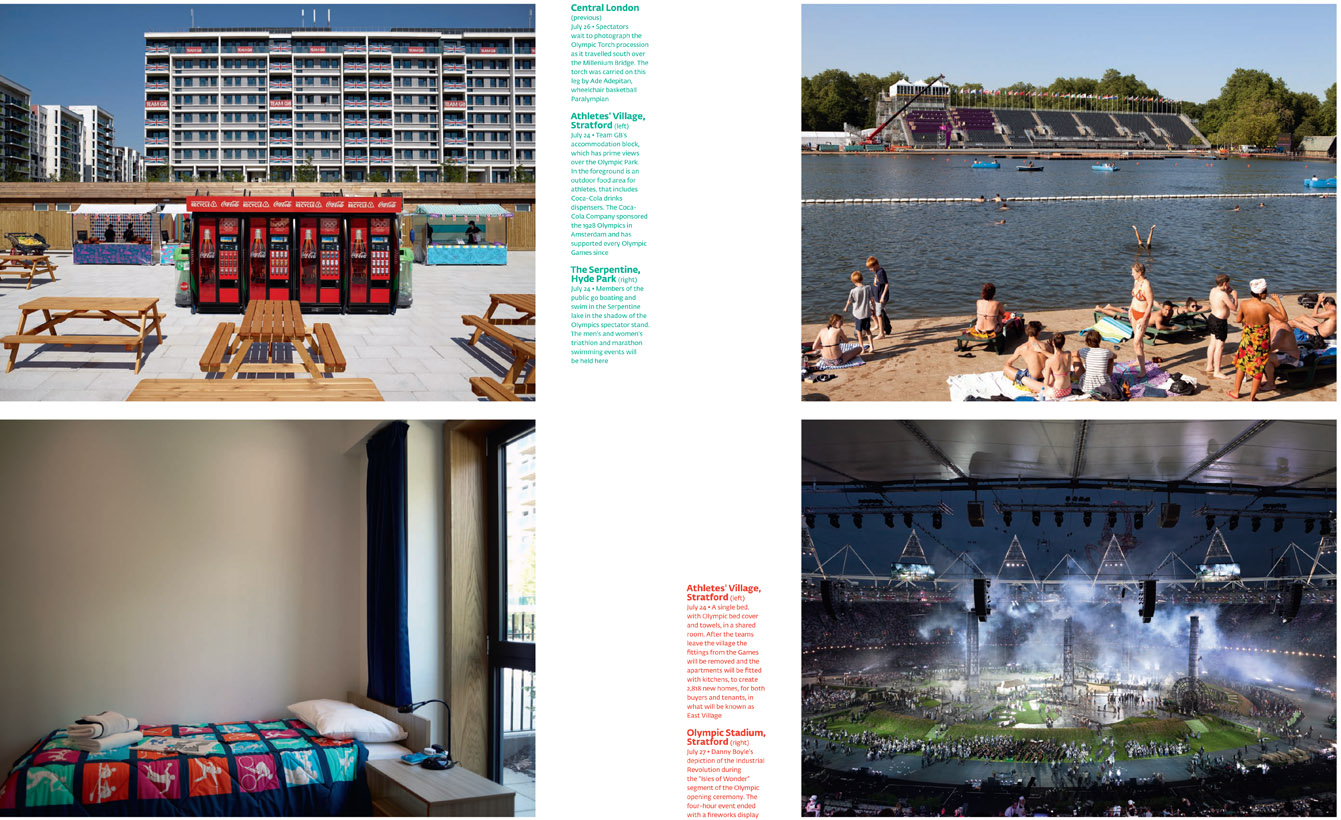
<img class="alignnone size-full slots online wp-image-3104″ title=”012-021_FTMAG_0408_FINAL-3″ src=”http://simoncroberts.com/wp-content/uploads/2012/08/012-021_FTMAG_0408_FINAL-3.jpg” alt=”” width=”1362″ height=”820″ />
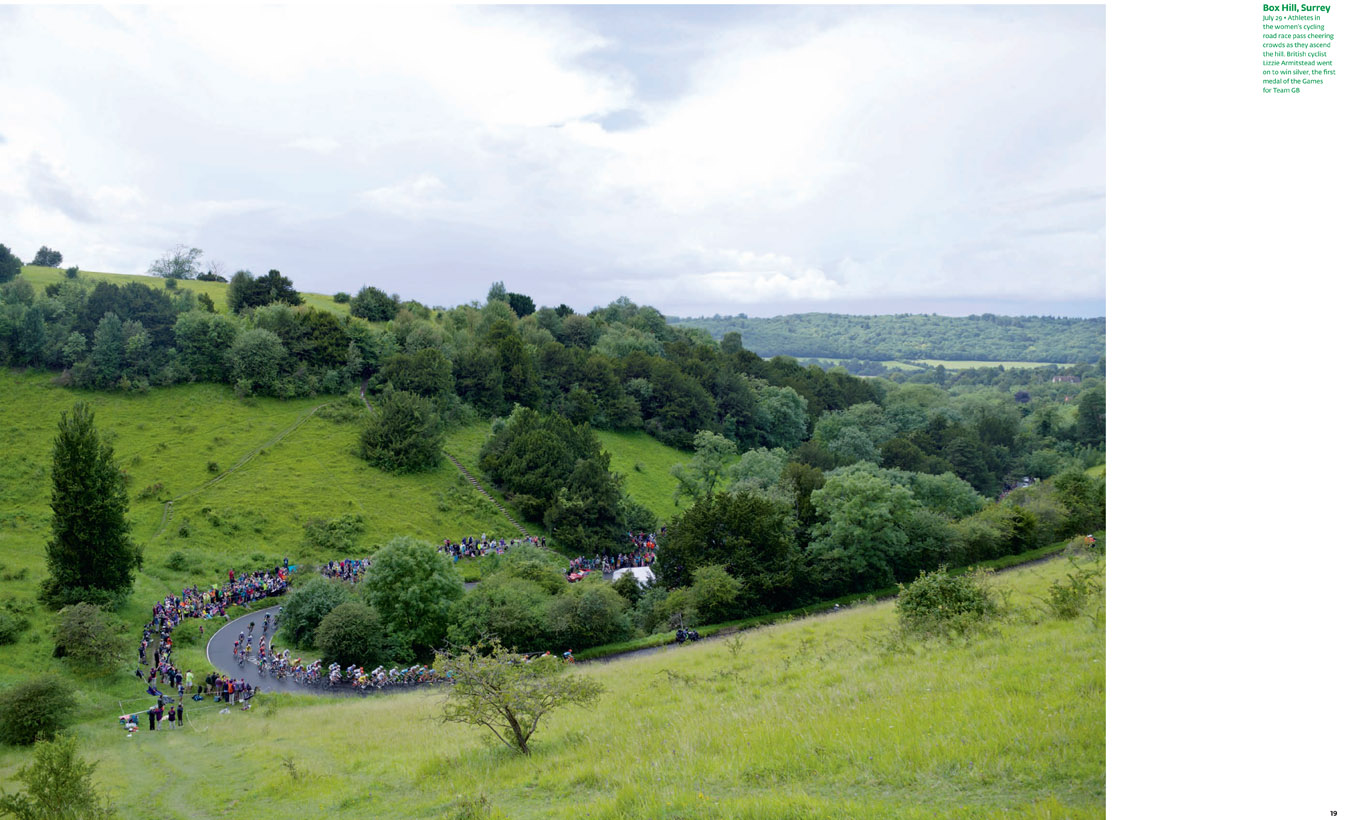

My new series of work ‘Let this be a sign’ is published in today’s FT Weekend Magazine. It incorporates the signs, iconography and language that have become part of Britain’s era of austerity.
Over the past 12 months I’ve been looking at different ways of representing these effects. I started with the series “Star Chambers”, published in the FT Weekend Magazine in April 2011. These were photographs taken inside city halls around the country, where annual budgets were agreed and major cuts signed off. But as the situation has moved on, I have employed video, text, objects such as protest banners, as well as photographs, in an attempt to record our new predicament and its shifting economic and political geography.
The crisis has moved terminology and jargon from the business pages on to the front pages of our newspapers, radios and TV sets; these words have become part of our everyday language. Arranged alphabetically, they highlight the fog of rhetoric, hyperbole and exotic, sometimes contradictory terms used by politicians, economists, protesters and journalists to describe the effects of the credit crunch. I collated the text from political speeches, papers from the governor of the Bank of England, newspaper headlines, protest poster slogans and economic reports, all of which reference the economic situation from 2007 to 2012. Against this lexicon I traced the downward graph of consumer confidence during the same period.
The UK high street has been one of the major casualties of the credit crunch, with a recorded dive in consumer spending leaving a wake of failed shops and brands. Sale signs are now omnipresent in shop windows, desperate to entice us with bright colours, shouty promises and seemingly massive price reductions. But while some shopfronts are shuttered for good, discount stores are enjoying a booming trade – known as “the Aldi Effect”.

The increase in demonstrations, student sit-ins and union strikes has seen a plethora of home-made, low-tech protest signs – ironic given the ways movements such as UK Uncut use social media to rally their followers. Compared to the angry slogans of the 1970s, the tone of these placards is quite gentle, with an underlying element of humour.
The Occupy London movement almost became an art installation in itself. Between mid-October and late February, the encampment outside St Paul’s Cathedral focused the protest against corporate greed and briefly became part of the local landscape. The montage opposite uses some of the hand-crafted notes, messages and signs posted up around the cathedral and Paternoster Square before the camp was closed down at the end of February.
What isn’t clear is how much difference the protests will make. As
the new financial year unfolds, and recovery is even slower than predicted, there is no guarantee that the fiscal landscape will improve. In this sense, my work is unresolved. The installation is ongoing, mutable and subject to all of our fears and desires.

My Polyarnye Nochi series is featured in the current issue of Russian Esquire magazine. To view comments visit the magazine’s website here.
